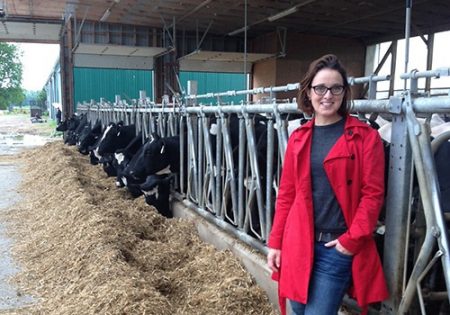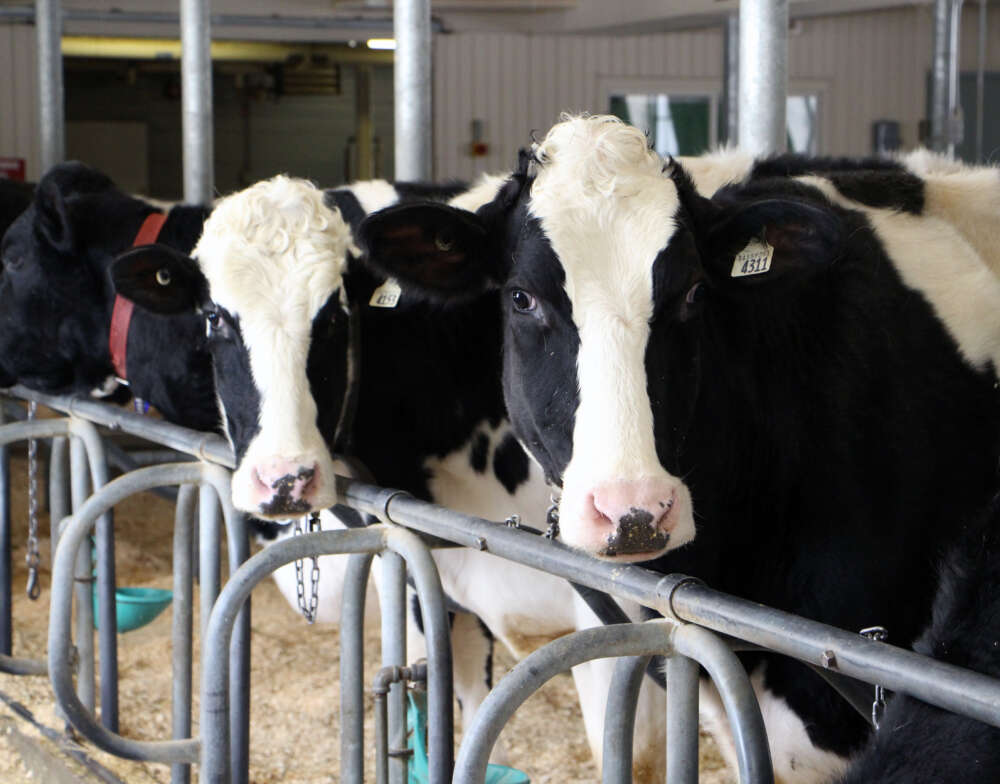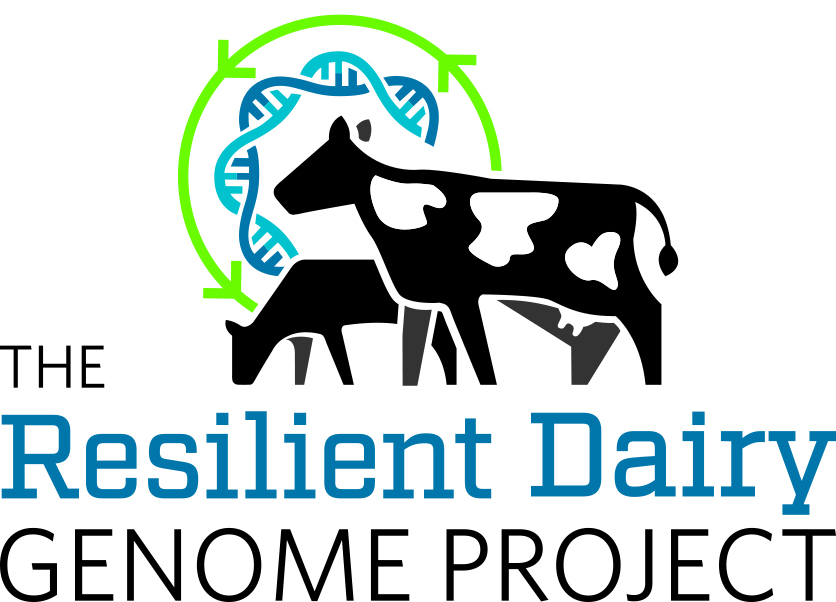Around the world, almost 14 per cent of all human-caused greenhouse gas emissions (GGEs) come from one source: burping livestock.
Now the first national genetic evaluation in the world to help select low-methane dairy cows – an advance based on University of Guelph research – is expected to help reduce those farm GGEs without affecting milk production.
The tool is now being used to estimate how much methane will be produced by each of the roughly 700,000 registered dairy cows on farms across Canada. Methane (CH4) has 32 times more global warming impact than carbon dioxide.
The new tool means breeders can now predict which cows will produce calves that, when fully grown, will ultimately belch out less of the greenhouse gas even as they continue to produce as much or more milk.
Methane efficiency used in cattle breeding a world first

Breeding individual cows genetically equipped to emit less CH4 is a win-win for food security and the environment, said Dr. Christine Baes, chair of the Department of Animal Biosciences within U of G’s Ontario Agricultural College.
“We’re concerned about climate,” said Baes. “We know there’s an animal agriculture influence on global warming. Canadian cattle are already quite feed efficient. This new evaluation will help us select the most environmentally efficient animals for breeding purposes.”
The addition of cows’ methane emissions – a genetic trait formally called methane efficiency – to dozens of genetic traits routinely used in selecting cattle for breeding is a world first, she said.
Those traits are now part of genetic evaluations maintained by Lactanet Canada, an organization that provides herd management tools and national genetic evaluations for dairy farmers.
Other nations are also working toward including methane efficiency in lists of breeding values for dairy cows along with conventional traits such as milk production, milk fat and protein content, and metabolic disease resistance.
“Canada is leading the field,” said Baes, who holds the Canada Research Chair in Livestock Genomics. “Canada is the first country to come out with a national genetic evaluation for methane emissions.”
Technology based on groundbreaking U of G research

The new methane efficiency measure is based on studies led by researchers in U of G’s Centre for Genetic Improvement of Livestock and its collaborators.
In fall 2022, the team published a paper in the Journal of Dairy Science describing how to predict methane emissions in dairy cattle using milk mid-infrared reflectance spectroscopy (MIRS).
Investigators working at the Ontario Dairy Research Centre in Elora, Ont., as well as dairy research facilities in Alberta and Denmark used MIRS to measure the absorption of infrared light in milk samples from almost 200 cows. The technology measures various milk components, including fats and proteins.
In their recent study, the team found that MIRS data could be used to predict methane emissions. Matching up those milk samples with DNA samples from individual cows allows a farmer to pinpoint which animals to breed for lower emissions.
Combining that measure with genetic traits for feed efficiency – how effectively a cow turns feed into milk – will enable farmers to contribute to more sustainable dairy operations, said Baes.
The team’s paper said the global livestock industry accounts for 14 per cent of anthropogenic greenhouse gas emissions.
“Lactanet used our paper to develop processes to apply to the national dairy herd,” Baes said.
Toward more sustainable dairy production

This research is part of the Resilient Dairy Genome Project (RDGP), funded by Genome Canada and led by Baes along with co-leaders and investigators at other Canadian universities and dozens of collaborators worldwide.
Established in 2020, that four-year project grew from the Efficient Dairy Genome Project begun in 2014 and led by other U of G researchers.
The RDGP will integrate novel genetic traits for cow fertility, health and feed efficiency into the national database held by Lactanet to help Canadian farmers and breeders.
Those collaborations involving industry, governments and academics are vital, said Baes.
“In this project, we truly built that bridge together with industry,” she said.
The Ontario Dairy Research Centre is owned by the Agricultural Research Institute of Ontario and managed by U of G through the Ontario Agri-Food Innovation Alliance.
The new methane emissions evaluations will be initially provided to owners of Holstein cattle involved in registration and herd testing; these animals make up most of Canada’s dairy herd. Other breeds will be included as more data is collected.
About one million dairy cows – both registered and non-registered – are raised on farms across the country.
Raised on a dairy farm in southwestern Ontario, Baes did undergrad studies in animal biosciences at U of G before completing graduate degrees in Germany. She joined the U of G faculty in 2015.
This research was funded by various organizations including the Ontario Agri-Food Innovation Alliance, a collaboration between the Government of Ontario and the University of Guelph.
Contact:
Dr. Christine Baes
cbaes@uoguelph.ca
